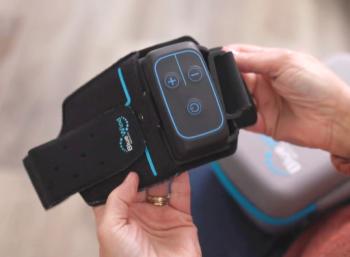
Burnout: it’s not just for doctors
Patients feel rushed and less empathetic care when doctors are burned out, but technology can mitigate some of the effects
Physicians are experiencing symptoms of stress and
Burnout can create a ripple effect across practices when it leads to
Implementing the right practice technology can not only mitigate these effects, it can also enable patients to take charge of their own care experience. Patients take note of the technology their providers use - both in the examination room and outside of the office. In fact, a recent
Here are three ways practices can leverage technology to empower patients and reduce burnout:
Minimize time spent on documentation in the EHR
One of the leading causes of physician burnout is
Implementing a mobile-first EHR software system that streamlines clinical intake and automates documentation not only saves time, but it can enhance
Leverage convenient digital patient engagement tools
The consumerization of health care and the rise of mainstream tech are altering patient preferences in terms of how they interact with their care providers. Patients are increasingly searching for convenience, comfort and control - all factors that enable them to manage their health care journey at their own pace.
Digital patient engagement tools that integrate seamlessly into practice management technology can help meet those evolving patient expectations. Automated patient reminders, patient surveys, self-scheduling, and online portals with quick access to exam results, lab notes, and other information are critical tools that practices can use to help patients make informed care decisions.
These tools also streamline administrative tasks, minimizing stress related to
Complicated billing and payment processes have also historically frustrated patients, especially when a practice doesn’t provide digital payment tools. Implementing a payment collection system that integrates seamlessly with a practice’s EHR, practice management software, and other engagement tools is a simple, yet effective way to simplify this process for patients and reduce administrative burden for the staff.
Create flexibility with telehealth
The pandemic breathed new life into telehealth, and today it remains a tool that can balance flexibility and quality care for some specialties. Implementing telehealth services in your practice allows providers to meet patients where they are, especially when an in-person visit isn’t necessarily required.
According to a
To prevent patient burnout, we must first address the daily issues physicians face that have led to it becoming such a drastic problem. It’s critical to take note of how patients prefer to interact with providers and invest in the technology that meets those preferences, while not placing undue burden on practice staff. These strategic investments can have a lasting impact on the success of a practice, but also the physical and mental health of both physicians and patients.
Michael Brickman, MD,
is a board-certified plastic surgeon and medical director of plastic surgery at the health care software company
Newsletter
Stay informed and empowered with Medical Economics enewsletter, delivering expert insights, financial strategies, practice management tips and technology trends — tailored for today’s physicians.














